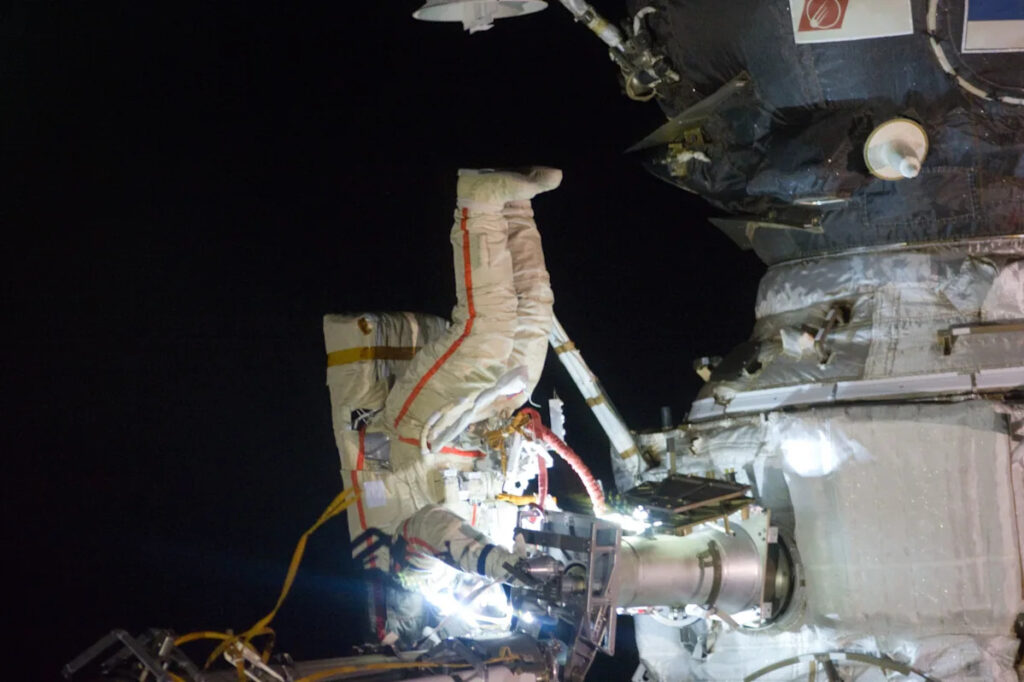
Zero gravity is often seen as one of the most exhilarating aspects of space travel, but it comes with significant health challenges. Under zero-g conditions, astronauts experience muscle atrophy, altered heart rates, increased blood pressure, and bone demineralization at a rate of 1% to 2% per month. For astronauts spending extended periods aboard the International Space Station (ISS), these effects can lead to considerable physical deterioration.
Exercise regimens are mandatory for astronauts, who spend two hours daily on treadmills and stationary bikes. However, these measures are insufficient to completely counteract the effects of prolonged weightlessness. The reduced gravity environments of the moon or Mars present similar risks.
“When I landed from space I had to be carried out of the capsule and went about my first few days on Earth looking like a 90-year-old,” says retired astronaut Kate Rubins, who spent 300 days in space. “Many of my physiologic systems replicated somebody who’s 20 or 30 years older than me.”
Introducing the Robot Pants
In a groundbreaking development, researchers led by Emanuele Pulvirenti at the University of Bristol’s Soft Robotics Lab have unveiled a potential solution: robot pants. As reported in the journal Advanced Science, these garments are designed to be worn under spacesuits, providing resistance akin to Earth’s gravity and helping maintain astronauts’ physical health.
The innovative pants consist of two layers: an outer nylon shell and an inner airtight plastic layer. They feature bubble artificial muscles (BAMs) at the knees, which can be inflated to exert pressure on the wearer’s muscles, simulating the exertion experienced under normal gravitational conditions.
Testing the Technology
The research team conducted tests at the University of Milan’s L.O.O.P. (Locomotion On Other Planets) lab, which is equipped to simulate reduced gravity environments. Six participants, with a median age of 31, were subjected to various conditions to assess the pants’ effectiveness.
Participants walked on a treadmill under six different scenarios: without the pants, with the pants but BAMs uninflated, and with BAMs inflated, both under Earth’s gravity and simulated lunar gravity. Sensors measured muscle activity and metabolic rates, providing insights into the pants’ impact.
Under Earth’s gravity, the presence of uninflated BAMs increased metabolic activity by 18.2%. Inflating the BAMs further boosted the rate to 20.1%. In simulated lunar gravity, metabolism rose by 20.1% with uninflated BAMs and 29.3% with them inflated. Leg muscle activation increased by 13.9% to 87%, depending on the muscle.
Potential Earth Applications
The implications of this technology extend beyond space travel. Pulvirenti envisions the robot pants aiding in rehabilitation for individuals with mobility impairments. “This exosuit is assistive, meaning it artificially boosts the lower-limb muscles, but we have also separately developed a resistive exosuit, which applies load to the body to help maintain muscle mass,” he explains.
The team aims to develop a hybrid suit capable of switching between assistance and resistance, offering significant benefits for those undergoing physical rehabilitation. While it may be years before humans return to the moon or reach Mars, the exosuit is poised to make a difference on Earth.
As space agencies and researchers continue to explore solutions for the physiological challenges of space travel, innovations like the robot pants could play a crucial role in ensuring the health and safety of astronauts. Moreover, the potential applications on Earth highlight the broader impact of space research on everyday life.







